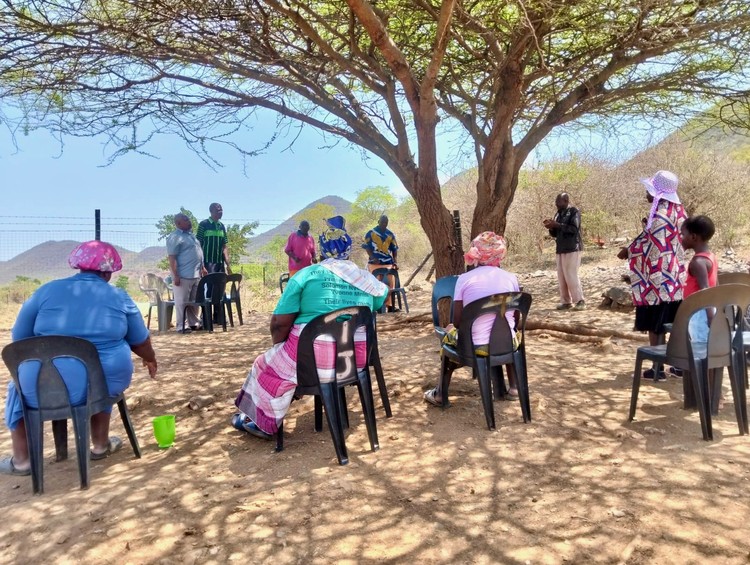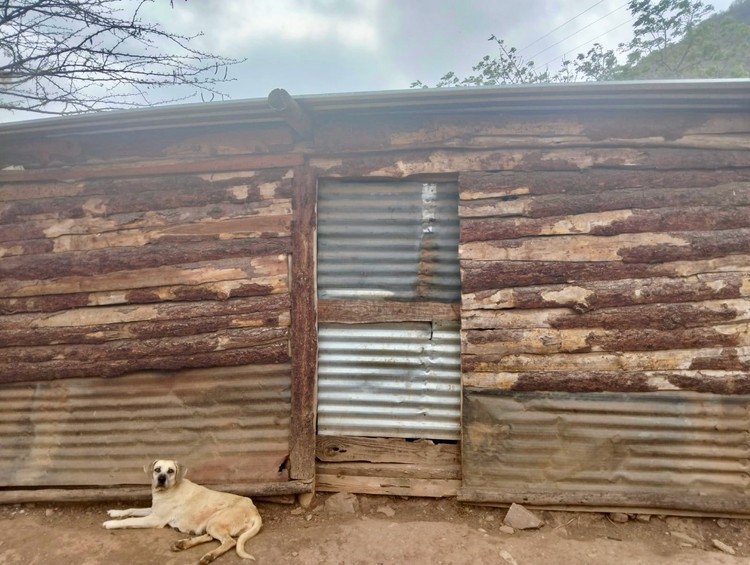Families camp at Lily Mine for six years waiting for bodies of their loved ones
Three miners remain buried 70 metres underground after a collapse at the Barberton mine in 2016
Three miners have been buried 70 metres underground since a crown pillar collapse in February 2016 at Lily Mine. Their families have been camping near the mine since April 2019, praying daily at noon and vowing not to leave until the bodies are recovered. Photos supplied.
- The bodies of three miners – Yvonne Mnisi, Pretty Nkambule and Solomon Nyirenda – remain trapped underground after a crown pillar collapsed on 5 February 2016 at Lily Mine near Barberton.
- Their families have been camping near the mine since April 2019 praying and hoping for the bodies to be recovered.
- The future of the mine remains uncertain after it went into business rescue and closed following the incident.
Every day at noon, Almond Mnisi leads his community in prayer. Yet their prayers have gone unanswered for six years. They want the return of the bodies of three miners who lie buried in Lily Mine, Barberton, in Mpumalanga’s gold belt.
One of those miners is Yvonne Mnisi, Almond’s daughter. The other two are Pretty Nkambule and Solomon Nyirenda – together known as the Lily Mine Three.
Their families have been camping near the mine fence since 30 April 2019, vowing not to leave until the bodies are recovered.
“Our kids are here, and we are going nowhere without them. So we are waiting for help so that we can bring them home,” says Mnisi.
The camp is made of canvas, wood and corrugated iron sheets.
SAPS attempted to evict them and legal challenges continue, but after years of silence, there is some hope that the long-awaited recovery mission may be mounted.
At 8:10am on 5 February 2016, a crown pillar deep in the gold mine collapsed. Mnisi, Nkambule and Nyirenda were in the lamp room, housed in a shipping container. The pillar collapse opened up a sinkhole that swallowed the container.
In the following days, voluntary Proto team mine rescue members hoped to reach it and perhaps even find survivors. They had managed to rescue 76 other miners. But they were blocked from reaching the container by huge boulders. Explosives were tried, but failed to dislodge them. Unstable ground made further recovery operations too dangerous.
Not long after the incident, Lily Mine went into business rescue and closed.
In July this year, there were reports that a Hong Kong company might restart operations.
Harry Mazibuko, spokesperson for the Lily Mine Three families, says they were told they will have to wait until February 2026 to see if the company has the funding to reopen the mine.
Last year, the Department of Mineral Resources and Energy gave permission for the mine to reopen.
In July, Mpumalanga Premier Mandla Ndlovu told the provincial legislature that the cost of the recovery operation would come to R18-million. He said the government was committed to retrieving the bodies of the three miners.
Herman Mashaba, Action SA leader, offered to fund the recovery effort and in April called for proposals. Mashaba says a fourth shaft is needed to reach the container, believed to be 70 metres below the surface.
Three years after the incident, the community had attempted on their own for 14 days to reach the container, using artisanal miner routes.
“There was no feedback from the union, no progress report as per the law from the business rescue practitioners. We knew the risk, we calculated the risk, but we were left with no option, just like today,” says Mazibuko.
“We found the fence, which we believe surrounded the electric transformer and that was close to the container,” he says. They also found a truck tyre that some recalled seeing close to the container.
But the operation was stopped by SAPS.
There are now new dangers for those who live in the camp. People come and go, sometimes there are as many as a hundred people. Recently, an artisanal miner took refuge in one of the tents after he was chased by a rival group.
But the families say they are staying. Rose Mkabi, Yvonne’s mother, says each time she leaves the camp, “it feels like I have forgotten her”.
Yvonne left behind two boys, Junior and Blessing. They are at school during the week and visit the camp on weekends.
Solomon had been the breadwinner in the family. He had a passion for soccer, remembers his mother, Fiona Nyirenda. Weeks before his death, he was busy forming a soccer club for children.
Pretty had been funding her younger brother, Sifiso Mavuso’s accounting studies. After her death, he was forced to drop out. He is now a miner, and spends most of the time underground.
In a few months, it will be ten years since the families suffered their tragic loss. Almond says he will continue leading prayer services.
The camp was constructed with what the community could find, including wood, canvas and corrugated iron.
Support independent journalism
Donate using Payfast

Don't miss out on the latest news
We respect your privacy, and promise we won't spam you.
© 2025 GroundUp. This article is licensed under a Creative Commons Attribution-NoDerivatives 4.0 International License.
You may republish this article, so long as you credit the authors and GroundUp, and do not change the text. Please include a link back to the original article.
We put an invisible pixel in the article so that we can count traffic to republishers. All analytics tools are solely on our servers. We do not give our logs to any third party. Logs are deleted after two weeks. We do not use any IP address identifying information except to count regional traffic. We are solely interested in counting hits, not tracking users. If you republish, please do not delete the invisible pixel.


